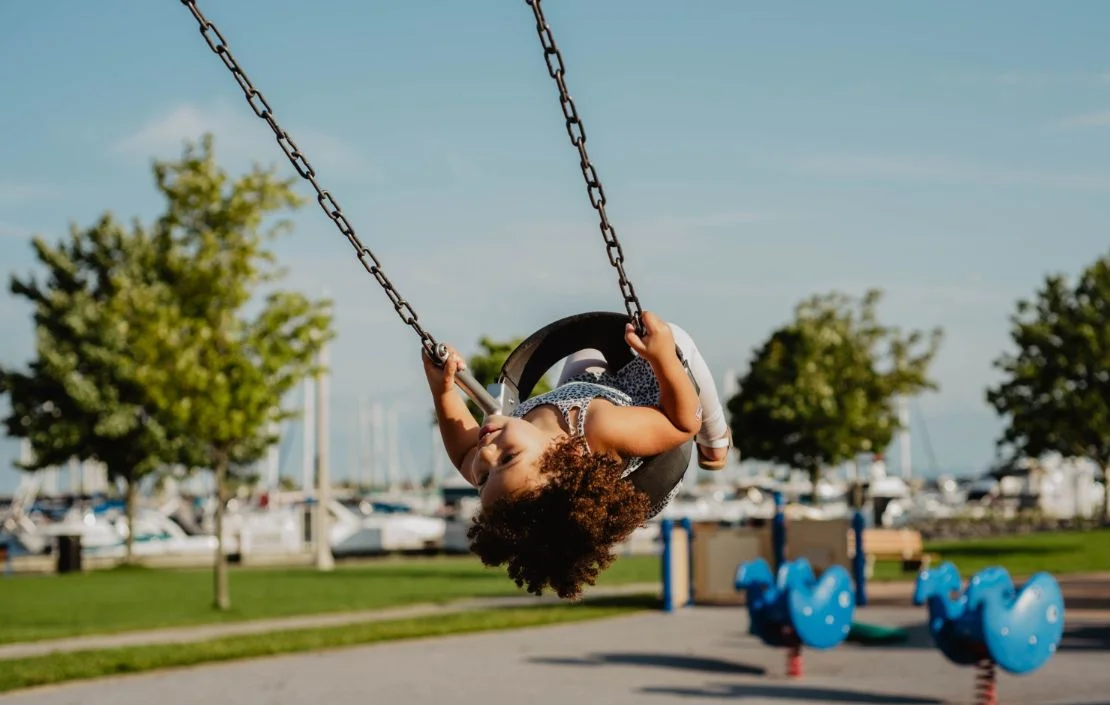Perhaps it is only fair to start with a trip down memory lane to understand well the complex nature of physical activity for children today! Only a few decades ago, there was so much time and room for children to play outdoors. In contrast, playtime is not regarded much today.
Remember the good old days of free play, where children climbed trees and slid down the muddy slope? They also flew kites and swam in small rivers without constant supervision by parents! Everything was simple and natural.
That reality is long gone, and meanwhile, we now have a collection of static toys and computing gadgets. To make matters worse, the new contraptions require that children sit down to play!
Here is food for thought:
- Inactivity in children gives rise to cases of non-communicable diseases (NCDs).
- Globally, 81% of school-going children are not physically active.
- Lack of physical activity contributes to anxiety and depression.
- According to the World Health Organization, physical inactivity is one of the factors leading to premature deaths globally.
Fortunately, starting with Generation Z and Generation Alpha, the matter of physical activity for children is receiving renewed interest – and for very good reasons.
Listed below are just some of the benefits of physical activity for children and adults:
- Stronger muscles and bones
- Energized body
- Better mental health
- Healthy heart
- Healthy outlook
- Better emotional health
- Better sleep
The open discussion will probably not bring back those glory days, but is a subtle reminder what exactly children are missing.
The big worry …
The worrying trend is that physical activity is gradually being replaced by physical inactivity. Without a doubt, this is a blight to early childhood development, because it can affect their cognitive, health, and social-economic wellbeing! The side effects of inactivity will live with them till adulthood.
In brief, the following are the health and other non-communicable diseases bound to affect sedentary persons:
- Weak bones and muscles
- Low vitality
- Poor mental health
- Heart complications
- Obesity
- Diabetes
- Poor sleep patterns
- Colon and other cancers
The impact of the modern-day lifestyle on the physical wellness of children

1. Misuse of technology
Most children are simply not moving around long enough, because they spend countless hours seated and swiping away on mobiles. This sedentary lifestyle does not allow them to achieve most of the much-needed development milestones.
According to Children’s Hospital of Eastern Ontario Research Institute.
Childhood physical inactivity reaches crisis levels around the globe: Report compares 49 countries; says 75 percent of countries have failing physical activity grades.
ScienceDaily. ScienceDaily, 26 November 2018.
It is only natural that kids run around the house and outdoors with a lot of excitement. This is hard-wired in their brains to keep them fit and grow into healthy persons.
According to a team of researchers, kids who run around do not tire much. This is because their muscles easily resist fatigue. Above all, they recover fast enough just like elite athletes.
They found out that,
children used more of their aerobic metabolism and were, therefore, less tired during the high-intensity physical activities… They also recovered very quickly — even faster than the well-trained adult endurance athletes — as demonstrated by their faster heart-rate recovery and ability to remove blood lactate… This may explain why children seem to have the ability to play and play and play, long after adults have become tired.
Frontiers
IN BRIEF, children should be left to play, play and play. And play again and again.
Unfortunately, kids in the 21st century are easily distracted by tech gadgets that are constantly being shoved in their faces. They so easily forgo playtime and prefer burying themselves in tablets and smartphones. Extended use of tech devices will make them feel tired, grow fat, develop poor eating habits, and ultimately sleep poorly.
While this is happening, parents simply look on, mainly due to ignorance.
Parents should (themselves) exercise restraint when using tech devices. This can help curtail similar behavior in children. Take them out and the magic of play will definitely happen.
2. The menace of urbanization
The few playgrounds and open spaces in cities are being cleared for housing, estates and other infrastructure, in order to accommodate even more people!
According to Open University, more than half of the global population lives in urban areas. In addition, the high birth rates will see an additional 2.5 billion people join the urban dwellings by 2050.
Interestingly, the flight to urban centers is ironic since children in rural areas are known to be more active than their fleeing counterparts.
According to research,
rural children are more physically active compared to city children, therefore it is interesting to identify if there is any difference in body posture in rural and urban schoolchildren… Regardless of age and gender, schoolchildren from the rural area had better posture than children from the urban area.
The expanding urban environment leaves little room for children to run around or take advantage of active transportation such as cycling. The fear of criminal activities in many street corners forces parents to cut down on child mobility outdoors.
Save for the school-going children who are allowed to exercise at school (that is if the schools permit or the children are interested), the young ones at home are destined to experience little or none of the outdoor playtime.
They automatically turn to the next best activities available at home, and for most urbane homes, this means technology.
3. The distracted parent/educator of the 21st century
Life in the 21st Century has gotten so intense, as parents juggle all kinds of workloads to sustain their families.
The rising cost of living and the need to try out multiple income-generating activities means they spend much of their time working.
When back home, they still have to grapple with unfinished assignments which they have carried along from the workplace.
They never get the time to walk their children through the much-needed physical activities. All they do is provide food, sleep, and a healthy environment.
Physical wellness is rarely fitted into the equation. Ultimately, the little ones are attended to by caregivers and preschool facilities. This notwithstanding that nobody else will provide the ultimate parenting other than parents themselves.
Besides parents, educators too, are not being very helpful. Mushrooming education institutions around the globe lack facilities for sporting activities and those that do are busy prioritizing academic excellence.
According to Health Education Research,
the lack of increased PA (Physical Activity) opportunities for children indicates a need to formally educate teachers on these benefits in order to attain quality time in which academic objectives can be met and children have an opportunity to be active during the school day
The final word
Walking your child down the park is probably not enough, but a good starting point. The goal is to transition from moderate to vigorous and intense physical activity on a daily basis.
Perhaps to get every parent started, here are a few tips from the World Health Organization:
Physical activity can be done almost anywhere and does not necessarily require equipment! Carrying groceries, wood, books or children are good complementary physical activities, as is climbing the stairs instead of using the elevator. Walking is perhaps the most practiced and most highly recommended physical activity and it is absolutely free. Some urban areas have parks, waterfronts or other pedestrian areas that are ideal for walking, running or playing. It is not imperative to go to a gym, pool or other special sports facility to be physically active.
As they get better and more active they should get involved in unsupervised free plays with other kids in the neighborhood. This promotes the goal of vigorous and intense physical activity.





Leave a Reply